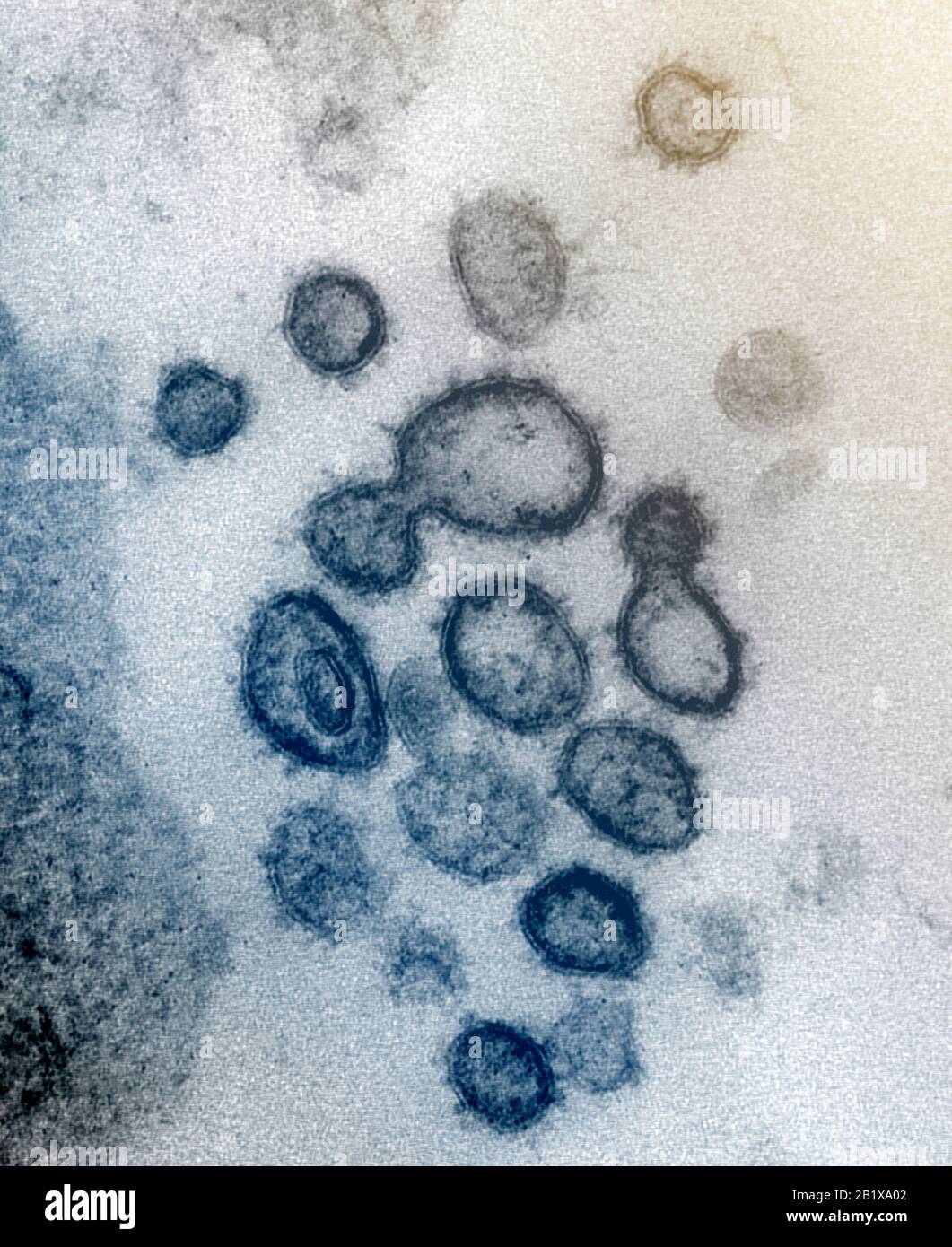COVID-19. Novel Coronavirus SARS-CoV-2 This transmission electron microscope image shows SARS-CoV-2—also known as 2019-nCoV, the virus that causes COVID-19—isolated from a patient in the U.S. Virus particles are shown emerging from the surface of cells cultured in the lab. The spikes on the outer edge of the virus particles give coronaviruses their name, crown-like. Credit: NIAID-RML

Image details
Contributor:
American Photo Archive / Alamy Stock PhotoImage ID:
2B1XA02File size:
67.8 MB (2.3 MB Compressed download)Releases:
Model - no | Property - noDo I need a release?Dimensions:
4398 x 5386 px | 37.2 x 45.6 cm | 14.7 x 18 inches | 300dpiDate taken:
26 February 2020Location:
USAMore information:
This image is a public domain image, which means either that copyright has expired in the image or the copyright holder has waived their copyright. Alamy charges you a fee for access to the high resolution copy of the image.
This image could have imperfections as it’s either historical or reportage.
Coronavirus disease 2019 (COVID-19) is an infectious disease caused by SARS-CoV-2, a virus closely related to the SARS virus.The disease is the cause of the 2019–20 coronavirus outbreak. It is primarily spread between people by small droplets from infected individuals when they breathe or cough. Time from exposure to onset of symptoms is generally between 2 and 14 days. Hand washing, maintaining distance from people who are coughing, and not touching one's face is recommended to prevent the disease. It is recommended to cover one's nose and mouth with a bent elbow when coughing. People may have few symptoms or develop fever, cough, and shortness of breath.Cases can progress to pneumonia and multi-organ failure. There is no vaccine or specific antiviral treatment, with management involving treatment of symptoms, supportive care, and experimental measures. The case fatality rate is estimated at between 1% and 3%. The World Health Organization (WHO) and U.S. Centers for Disease Control (CDC) recommend those who suspect that they are carrying the virus wear a surgical face mask and seek medical advice by calling a doctor rather than directly visiting a clinic in person. Masks are also recommended for those who are taking care of someone with a suspected infection. Masks are not recommended for the general public. The WHO has declared the 2019–20 coronavirus outbreak to be a Public Health Emergency of International Concern (PHEIC).[27][28] While as of 19 February 2020, only Mainland China was listed as an area with known ongoing community spread of the disease, by 28 February 2020, other countries including Italy and Iran were included in the list.